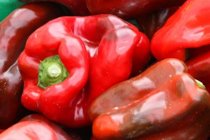Web-based estimates of food productivity for enhanced food security- 5 ECTS
Access to food for everyone?!

The food security formula[1]: “Ensuring that all people at all times have both physical and economic access to the food that they need” hinges on the notion we are all well informed. The promise of timely and easy access to geo-information is an essential building stone in achieving this. Learn what maps from the Internet can do in Food security assessments. Subscribe to our course “Web-based estimates of food productivity for enhanced food security”.
Growing concerns on the productivity and sustainability of agricultural land uses have increased the demand for more detailed and timely information on current and future production levels of food and fibre crops at regional scales. The qualitative and quantitative methods introduced in this course provide course participants with the latest Geo-Information techniques to generate quantitative assessments of the current and future state of the agricultural production in a region using satellite data and simple simulation models.


Aim
This course aims at teaching you how to make and communicate relevant spatial information to avoid or solve food security problems. It also provides you a scientific attitude in analytical reasoning and critical thinking when working with geographical data and products. This course is part of the iGEON Distance Learning Programme.
Approach
We emphasize a Web-based approach. This means we train you in breaking down complex food security problems into manageable pieces, which can be analysed by the latest Internet technologies. Around this we build simple but effective models of food security with satellite remote sensing at its core. You will be challenged to unravel cause effect relationships and to select the appropriate spatial variables to measure food security. Practicing geo-information analysis through the Web enables you to solve food security and natural resource management problems in your home situation.
What is the course content?
- Techniques for deriving agro-ecosystem parameters from satellite data.
- Yield forecasting and scenario analysis.
- Case study on food security, monitoring and management.
For whom is the course relevant?
This course is relevant for professionals who are engaged in any of the geosciences, natural sciences, or engineering sciences having a basic knowledge of natural resources monitoring, remote sensing, digital image processing, and GIS.
Detailed description
For more information, click here.
[1] FAO, 1983.